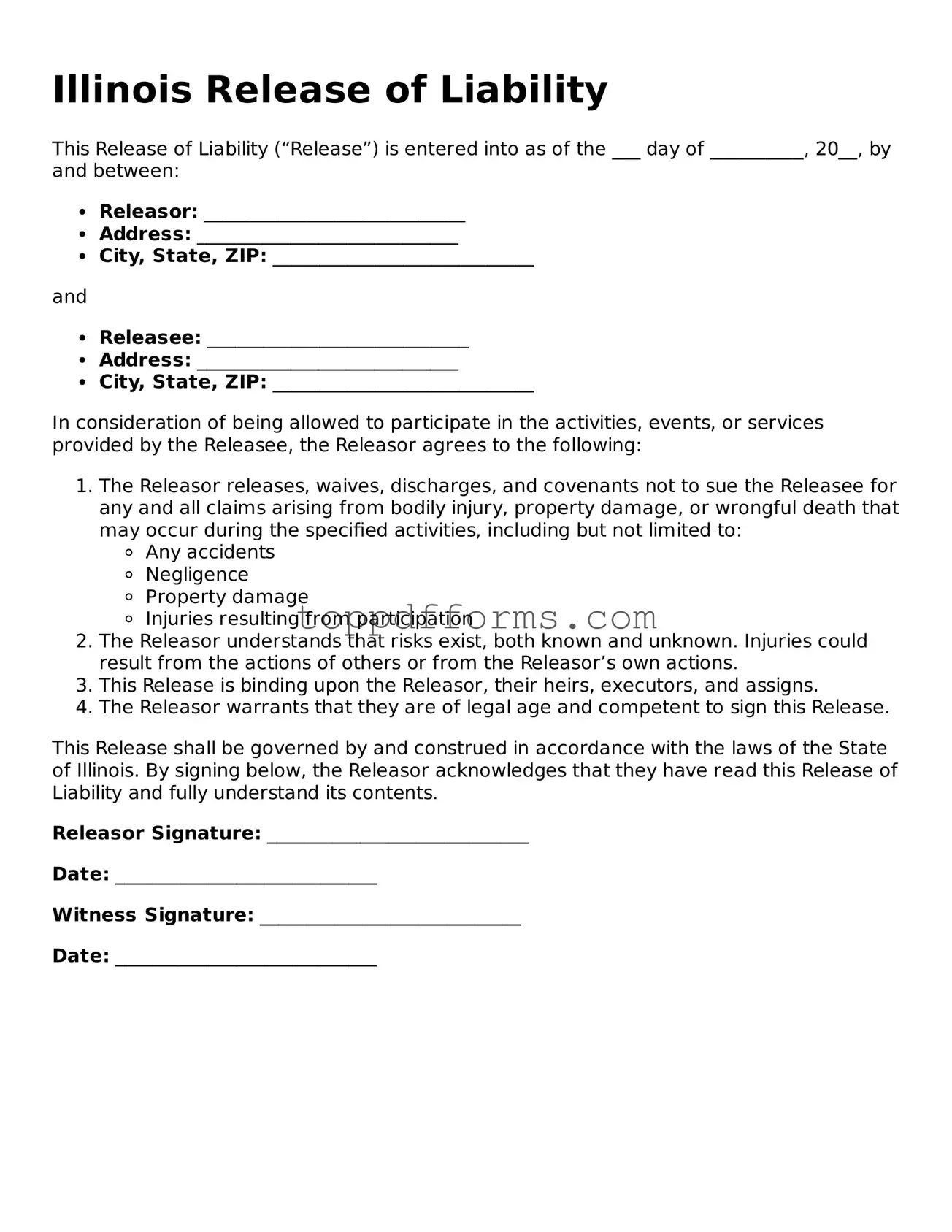What is an Illinois Release of Liability form?
The Illinois Release of Liability form is a legal document that individuals or organizations use to protect themselves from legal claims or lawsuits. By signing this form, participants acknowledge the risks associated with an activity and agree not to hold the organization or individual responsible for any injuries or damages that may occur during that activity. This form is commonly used in recreational activities, sports, and events where there is a potential for injury.
Who should use a Release of Liability form?
Any organization or individual conducting activities that carry inherent risks should consider using a Release of Liability form. This includes sports clubs, recreational facilities, event organizers, and even private individuals hosting gatherings. The form serves to inform participants about the risks involved and to obtain their consent to participate, thereby reducing the likelihood of legal disputes.
What are the key components of an Illinois Release of Liability form?
A comprehensive Illinois Release of Liability form typically includes several essential components. These include a clear description of the activity, an acknowledgment of the risks involved, a statement of release that waives the right to sue, and the signatures of the participants. Additionally, it may require the date of the event and contact information for both the participant and the organization. Clarity and specificity are crucial to ensure the form is enforceable.
Is a Release of Liability form enforceable in Illinois?
Yes, a Release of Liability form can be enforceable in Illinois, provided it meets certain legal standards. The language must be clear and unambiguous, and the risks must be adequately explained. Courts generally uphold these forms unless they contain overly broad language or attempt to waive liability for gross negligence or willful misconduct. Therefore, careful drafting is essential to ensure enforceability.
Do minors need a Release of Liability form?
Yes, when minors participate in activities that require a Release of Liability form, a parent or legal guardian must sign on their behalf. This signature acknowledges the risks involved and provides consent for the minor to participate. It is important to ensure that the language is understandable to both the parent and the minor, as this enhances the likelihood of the form being upheld in court.
Can a participant revoke their consent after signing the form?
Once a participant has signed a Release of Liability form, they generally cannot revoke their consent retroactively. However, they may choose not to participate in the activity after signing. It is crucial for participants to fully understand the implications of the form before signing, as doing so indicates their acceptance of the risks involved.
What should organizations do to ensure their Release of Liability forms are effective?
Organizations should consult with legal professionals to ensure their Release of Liability forms are properly drafted and tailored to their specific activities. Regular reviews of the form are advisable, especially if there are changes in the law or the nature of the activities. Additionally, organizations should ensure that participants are given ample opportunity to read and understand the form before signing, which can further strengthen its enforceability.
